Torah in Five Books
The definition of the word Torah is literally “instruction,” and when Jews say “Torah,” they’re most likely speaking of the Five Books of Moses, the foundation of all Jewish instruction and guidance. We also call it the Chumash, from the Hebrew chamesh, which means five—just like the not-so-Jewish and somewhat archaic title Pentateuch comes from the Greek prefix penta, also meaning five.
Often, when people talk about “a Torah,” they are referring to a parchment scroll version of the Five Books of Moses that is kept in the ark of the synagogue and taken out to be read during services.

Torah in 24 Books
The Five Books of Moses are actually one section of a collection of works which is also called Torah, but otherwise known as Tanach (תנ״ך).
Tanach is an acronym of the words:
-
Torah: Chumash (Five Books of Moses) —as above
-
Nevi’im (Prophets)
-
Ketuvim (Writings, such as Psalms, Lamentations and Proverbs)
There is a distinction, however.1 Although all the books of Tanach are revered as divine works, the Chumash holds a unique place. That’s because the Chumash is the work of Moses, and the veracity of the Moses’ prophecy is based on a national experience—an event at Mount Sinai in which the entire nation witnessed G‑d communicating with him.
Until that point, the people could not be entirely certain that what Moses was telling them was truly from G‑d. They had no empirical evidence other than his miracle-working—but what do miracles demonstrate? Only an ability to perform the supernatural; they are not evidence that G‑d has spoken to you or anyone else. That is why only when the people saw and heard for themselves did they no longer bear doubts.
Click here to read How Do We Know We Heard G‑d at Sinai?
All other prophecies in Tanach, whether Samuel or Isaiah or Daniel, were the testimony of a single individual. They are believed only because Moses instructed us—in G‑d’s name—to believe and to obey prophets who fulfill the conditions set out clearly for them. Someone who speaks in the name of G‑d but does not fulfill these conditions is to be harshly punished—regardless of the miracles he may perform.2
Obviously then, no prophet can add or detract from anything Moses taught—since their credibility rests entirely on his authority.3 The prophets come only to explain, elaborate and admonish the people to keep “the Torah of Moses,” as the last of them, Malachi, said, “Be mindful of the Teaching of My servant Moses, whom I charged at Horeb with laws and rules for all Israel.”4
To read Maimonides’ classic exposition of this distinction, click here and read the following three chapters.
Tanach is sometimes referred to by the rest of the world as “The Hebrew Bible.” Jews wrote many other books of history, wisdom and prophecy, but none of these were considered to be divine and eternal so as to be included in Tanach.
So I could also say, “The Song of Songs is a book of the Torah”—even though it’s not one of the Five Books of Moses.
Click here for a chart of the entire contents of Tanach, with a short description of each of its 24 books.

Oral Torah—an Endless Torah
Every work requires knowledge and understanding of its context to make sense of its contents, how much more so one that is meant to convey all instructions necessary for an entire nation and every individual in every situation for perpetuity.
That’s why we have “The Oral Torah” (in Hebrew: Torah Sheba’al Peh תורה שבעל פה). And that’s literally endless.
In the Five Books of Moses, we read repeatedly how Moses would transmit instructions from G‑d to the people. But it is readily apparent that Moses taught much more than could be set in writing in those five books.
For example, in writing we are told to “rest on the seventh day”—but there is no written explanation of what sort of rest is meant. We are told to slaughter animals before eating them “as I commanded you”5 —with no description of what sort of slaughter was commanded.
The examples are almost endless. There is so much missing and so much ambiguity that hardly any law can be drawn from the plain text in practical terms.
Add to this the fact that the written Torah does not contain the vowel points necessary for reading Biblical Hebrew. The word for milk, for example, has the same letters as the word for fat. In many cases, the only way to know the difference is due to the tradition. Neither is there any punctuation in the written text.
No wonder that when the early Protestants began to translate the Hebrew Bible into the vernacular they were forced to rely on the Jewish tradition of punctuation and vowels as well as on classic Jewish commentators for the simple meaning of the text.
The Torah also commands the elders to "keep the Children of Israel away from impurity!"6 It says, "Guard My guardings!"7 Which means that if the spiritual leadership sees that their generation has greater temptation than earlier generations—or simply cannot be as careful as before—it's time to add some warnings to hold them further at bay.8 Many such precautions were added in early Jewish history without being recorded in a public document.
Additionally, from time to time, the sages and leaders of the people used the principles of interpretation transmitted by Moses to derive new rulings, or recover those that were forgotten. They also established new edicts to protect the law or to apply it to new situations as they arose, such as Purim and Chanukah. The Torah itself provides ample authority to the seventy elders and to the “priests and the wise men who will be in your times” to answer “all that is difficult for you” to the point that “you should not turn from their words to the left nor to the right.”9
So the bulk of the Torah had to be transmitted orally, from father to son, teacher to student.10 It could only be transmitted that way, due to its very nature. While the written Torah is a sacred text bound within a precise number of words, the Oral Torah is a living, growing organism of wisdom, insight and knowledge that thrives in the waters of a teacher-student relationship and cannot be captured in a net of dry ink on a page. Yet eventually, the essential core of this oral tradition had to be committed to writing, so that it would not be lost.11
The Oral Torah is a living, growing organism that cannot be capture by the net of dry ink on a page.Being that this oral tradition is also a vital part of the divine instruction, it’s also called Torah—the Oral Torah. It includes:
-
the proper reading of the text, it’s punctuation, vowels and cantillation, along with the meaning of the words.
-
the compilation of laws and rulings known as Mishnah, along with other accepted compilations, such as Sifre, Sifra, Mechilta, Braita and Tosefta.
-
the discussion and debate of that material, known as Talmud or Gemara,
-
the esoteric works (often known as Kabbalah) and ethical guides based on Torah and composed by Torah scholars,
-
the stories and their lessons that are collected in the Talmud and Midrashic works,
-
any other teaching that has been accepted by a long-term consensus of the practicing Jewish community, because it is based firmly on some precedent, or because it has been demonstrated to emerge by accepted means from previous texts and opinions.
As the Talmud states, “Scriptures, Mishnah, Talmud and Aggadah (anecdotes and parables)—even that which a diligent student is destined to instruct before his teacher—all was already told to Moses at Sinai.”12
So, yes, a friend might tell you, “You should have heard the amazing Torah the rabbi said in the name of his teacher this morning!”
If you ask him, “Which book of Torah?” he might answer that it hasn’t been written yet. That’s because the Oral Torah is forever alive and growing in the minds and mouths of those who study it, believe in it and embrace it. How exactly that works we’ll explain later.

Integrity of the Oral Torah
A question commonly asked: How do we know the elders and the rabbis got it right? And how do we know that this oral tradition hasn’t been corrupted over the years?
But when you consider that the author of this system is the same as the author of the entire Torah—namely G‑d Himself—the question falls away. As cited above, G‑d instructed us to bring all difficult issues to the established courts of elders and sages in each era and to follow their rulings. If He relies on them, we can too.
G‑d instructed us to bring all difficult issues to the established courts of elders and sages in each era and to follow their rulings. If He relies on them, we can too.The Midrash of Rabbi Tanchuma puts it this way:13
A person should not say, “I won't fulfill the mitzvot of the elders, since they are not from the Torah.”
The Holy One, blessed be He, tells such people, “My children, you are not permitted to speak this way! Rather, all that they decree upon you, you should fulfill, as it says in My Torah, ‘You shall do according to the Torah that they teach you.’14 Why? Because I also agree with their words, as is said, ‘You shall decree a statement and it shall be established for you.’15 ”
The first book of Torah, the Book of Genesis, in particular, repeatedly teaches us that G‑d is found in history. He never left us and continues to guide us through His prophets, His sages and the righteous men and women He sends to shepherd His people.
As well, the process by which new rulings and teachings are established and transmitted is a robust one. We are not speaking of a small cloister of individuals, but an entire nation involved in study, debate and transmission of the Torah’s oral tradition. For a new law to become effective, it had to be accepted by the entire community. For it to last, it had to be transmitted by a critical mass of teachers.
Questions were always encouraged as a vital part of learning. A common question that appears repeatedly in the Talmud is “From where does this come?”—meaning, “How did this get to us—through exegesis from a text, through an oral tradition from Moses, or by some later decree?” No tradition was taken for granted, no new ruling went without strong precedent.
The Talmud provides a very striking example as an illustration:16
Rav Judah said in the name of Rav:
When Moses ascended on high he found the Holy One, blessed be He, engaged in affixing crowns to the letters.
Said Moses, “Lord of the Universe, Who is forcing you do to this?”
He answered, “There will arise a man, at the end of many generations, Akiva ben Joseph by name, who will expound upon each stroke heaps and heaps of laws.”
“Lord of the Universe,” said Moses, “permit me to see him.”
He replied, ‘Step back.”
Moses stepped back and sat down behind eight rows of Rabbi Akiva’s students. He had no clue what they were talking about and he felt faint.
Then they came to a certain subject and the disciples said to the master “How do you know that?”
Rabbi Akiva replied “This is a law we know by oral tradition to have been given to Moses at Sinai.”
And Moses was comforted.
Nevertheless, we almost always find disparate views on a subject. Our tradition addresses this by explaining that Moses, as well, received multiple views:
Rabbi Yanai said:
The Torah was not given cut and dry. Rather, for everything that G‑d would tell Moses, He would provide 49 facets of purity and 49 facets of impurity.
Moses said, “Master of the Universe! When will we ever get this clarified?”
G‑d replied, “Turn after the majority17 . If those who declare it pure are in the majority, it is pure. If those who declare it impure are in the majority, it is impure.
Rabbi Avahu said in the name of Rabbi Yonatan, “Rabbi Akiva had one diligent student and his name was Rabbi Meir. He was able to find 49 facets of Torah to declare a rodent pure, along with 49 facets to declare it impure.”
Rabbi Yehoshua ben Levi said, “In the days of Saul and David, and in the days of Samuel, even little children knew how to learn the Torah with 49 facets of purity and 49 facets of impurity.18
This notion of multiple truths through which every student must sift is a fundamental principle in Torah study—as well as one of the secrets to the robustness of tradition. In Jewish tradition, G‑d is also called “the Infinite Light”—or just “the Infinite.” As He is infinite, so the wisdom that comes from Him is limitless in its application, as well as in the points of view it may include.19
Obviously, not all opinions are Torah. There are requirements, vital to ensuring the integrity of Torah. See the section below, “Can People Create More Torah?”
As the Talmud expounds the words of Ecclesiastes:
“The words of the wise are like goads; like well-fastened nails are the sayings of the masters of collection, given from one shepherd.”20
…Who are the “masters of collection”? These are the students of the sages who sit in groups occupied in Torah. These declare something impure and these declare it pure. These forbid and these permit. These declare something kosher and these declare it unfit.
Perhaps a person will say, “If so, how can I study Torah?”
This is what we were taught: All were given by a single shepherd. One G‑d gave them, one leader spoke them from the mouth of the Master of All Things, blessed be He, as it is written, “And G‑d spoke all these things, saying...”
You, too, should make your ear like a grinder and acquire an understanding heart to hear the words of all these opinions.21

Authorship of the Torah
The Jewish tradition is that Moses wrote the Five Books of Moses. You will find allusions to this at several points in the text, and yet more explicitly in Joshua 1:7–8. Sixteen instances in Tanach make reference to “the Torah of Moses.”
Yet we can’t really call Moses the author. Truly, no prophet is his own author. Some, like David, were able to say, “The spirit of G‑d spoke within me and His word is on my tongue.”22 He felt himself nothing more than a conduit for the divine to enter this world. Others saw visions or dreams which were given to them from Above so they could transmit a message to the people.23
But Moses’ prophecy was on an entirely different level. His words were not cloaked in allegory and metaphor, but were direct instructions, as precise articulations of the divine voice that preceded the universe. There was no sense of self within Moses’ words—as we see, that he refers to himself in the third person, describing his birth and the events of his life objectively, as though speaking of someone else.24
There was no sense of self within Moses’ words—as we see, that he refers to himself in the third person.This is what G‑d means when He tells Miriam and Aaron, “Mouth to mouth I speak with him.”25 This is also what the Talmud means when it says that “G‑d dictated and Moses wrote.”26
For more on how it’s possible for someone to write a book dictated by G‑d, see How and When Was the Torah Written?
What about the last eight verses of the Torah, which describe Moses’ death? The Talmud records two opinions.27 Rabbi Yehuda says that these last verses were written by Joshua, Moses’ student and heir. Rabbi Shimon differs, saying, “Until this point, the Holy One, Blessed be He, dictated and Moses repeated after Him and wrote the text. From this point forward, the Holy One, Blessed be He, dictated and Moses wrote with tears.”

When Did Moses Write the Torah?
When did Moses write all this? The Talmud provides two opinions on this topic as well. One is that he wrote separate scrolls as matters unfolded over the forty year period in the wilderness, and only sewed them together at the end of his life. The other is that he wrote all five books at the end of his life.28
Up until the late 17th century, the divine origin of the Torah went unquestioned. European scholars and statesmen alike cited it far more than any other source, as it was considered a text of the highest authority. That is why most of what we consider “enlightenment values” find their source in Torah.29
In the 18th and 19th century, some secular scholars attempted to date the writing of the Torah to a much later era. Most prominent was Julius Wellhausen, who claimed it was a forgery, the work of priestly canonizers in the early years of the second Temple cobbling together writings of several traditions. This is generally referred to as “The Documentary Hypothesis”—an attempt to reconstruct the evolution of the text, somewhat akin to attempting to unscramble an entity that you have deemed to be a scrambled egg.
No external evidence has been produced to support this hypothesis, and quite the contrary, the syntax and format of hundreds of thousands of ancient near eastern documents discovered in more recent times undermine many of its assumptions.30 We are now able to trace texts as they are modified over the ages, and no such cobbling has been found.
As far as internal evidence—that is, from the text itself—the explanatory power of the hypothesis raises more questions than it answers, and traditional commentary addresses most of its issues in a more satisfactory way. Also, we now know that what was previously assumed to be anomalies of the text pointing to multiple authors, such as grammatical shifts and repetition, are actually quite common in documents of the ancient Near East.
Furthermore, it has never been clarified who exactly benefits from this conspiracy, as the Torah places restriction and blame on just about everyone, nor why anyone would fall for it.
The hypothesis has never been without scholarly detractors, and has come under serious attack in recent years by several experts, including the foremost Egyptologist of the Ramses era, Kenneth A. Kitchen, who claims that the absence of anachronism and the descriptive detail and accuracy demonstrate that the work could only have been composed contemporaneously.31 James K. Hoffmeier is another highly respected Egyptologist who has published in support of a contemporaneous reading.32 Several academics have even claimed that scholars only cling to this paradigm due to its enabling power.33
The Jewish tradition of Mosaic authorship, on the other hand, was the universal consensus of both Jews and Christians until the late 17th century. The Jewish tradition is an unbroken chain, and it was always public knowledge of a large mass of people—which is extremely difficult to forge. As all alternative hypotheses are only speculative, it makes sense to default to the tradition.

Who Wrote the Rest of the Books of the Torah?
What about the remaining books of the Tanach that are also called Torah? Here is a list of their authors according to the Talmud:34
-
Joshua: Joshua, completed by Pinchas.
-
Judges and Ruth: Samuel
-
Samuel: Samuel, completed by Gad the Seer and Nathan the Prophet.
-
Psalms: David, collecting his own songs as well as those of ten elders: Adam, Melchizedek, Abraham, Moses, Heiman, Yedutun, Asaf and three sons of Korach.
-
Job: Moses
-
Kings: Jeremiah
-
Jeremiah, Book of Kings, Lamentations (Eicha): Jeremiah.
-
Isaiah: Transcribed and preserved by Hezekiah and his colleagues.
-
Proverbs, Song of Songs, Ecclesiastes (Kohelet): Composed by Solomon, transcribed and preserved by Hezekiah and his colleagues.
-
Ezekiel, the Twelve Prophets, Daniel and the Scroll of Esther: The Members of the Great Assembly (during the Babylonian exile).
-
Book of Ezra and Chronicles: Ezra, completed by Nehemiah.
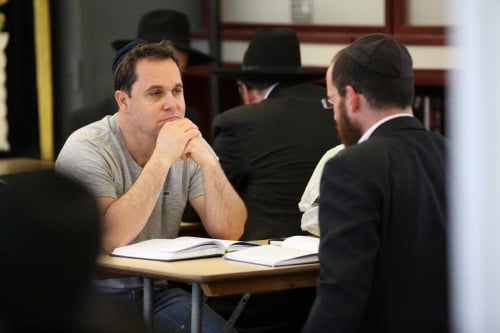
Can People Create More Torah?
We said above that Torah is constantly being created by its students. But how could this be, if the Torah is a divine instruction?
A simple answer is that the Torah provides general principles, and it is up to us to figure out how those principles apply in new situations as they arise.
For example, as technology advances, questions arise. The Torah says, “You shall not ignite a fire in any of your dwelling places on the day of Shabbat.”35 Does that include turning the ignition key on a fossil-fuel car? (Consensus: Yes)
How about flicking an electric switch? (Consensus: Probably not, but still prohibited for other reasons.)
Or heating up the carbon filament in an incandescent bulb, so that it glows? (Consensus: Prohibited by two opinions—one that is a fire, the other that heating metal until it glows is considered cooking.36 )
Can we let electric devices continue working for us on Shabbat without our intervention? (Consensus: Under the right conditions, yes.)
In medical ethics, as well, as new situations arise almost daily, Torah precedents are mined to provide guidance and clarity.
Similarly, when the Torah tells us a story in order to teach a lesson. In each generation, we must determine what is the relevant lesson for those times.
But how do we call those applications themselves Torah? It would seem that they are our own wisdom and not divine wisdom.
An answer is found in Torah itself. Moses describes the event of G‑d speaking at Mount Sinai with these words: “There was a great voice and it never stopped.”37
The last words of that verse—v’lo yasaf—are not only ambiguous but contain two opposite meanings. They could mean, “and it never stopped.” But they could also mean, “and it never recurred.”38
Both are true. The Midrash39 explains:
Said Rabbi Yitzchak:
Whatever the prophets were destined to prophesy in each generation they received from Mount Sinai. For that is what Moses said to Israel, “For those who are here standing with us today … and those who are not here with us today.”
He didn’t say, “Those who are not standing with us here today,” but just “those who are not with us today.” That is because he was speaking of the souls that were destined to be created but were as yet without substance. Of these, it could not be said that they were standing, yet they too, each one, received that which belonged to them.
So it also is said, “The burden of the word of G‑d in the hand of Malachi.” Not “in the days of Malachi,” but “in the hand of Malachi.” For the prophecy was already in his hand from the event of Mount Sinai. It was only that he was not permitted to prophesy until the time for it arrived.
The same is said about Isaiah: “From the day and from the time that it was, there was I.”
Isaiah was saying that from the day the Torah was given at Sinai, there I was, and there I received this prophecy. It is only that “and now, Hashem, G‑d, has sent me and His spirit.” Meaning, until now I was not granted permission to prophesy.
It was not only the prophets who received their prophecy from Sinai but also all the sages that arose in every generation. Each one received that which is his from Sinai.
So is it said, “All these things G‑d spoke to all your congregation, a great voice that never ends.”
In every generation, in every place where Torah is studied, Sinai occurs again, and again, and again, with each new discovery, each flash of wisdom and insight that was never known before. Each is an unfolding of that same voice, each as needed for that time and place.
The seed of Torah was planted with the experience at Sinai, and the DNA of that seed continues to unfold.One could say that the seed of Torah was planted with the experience at Sinai, recorded in the Five Books of Moses, but that the voice of Sinai continues to be heard in each generation as students of the Torah unfold the DNA of that seed, discovering new meanings that were always meant, and new applications that had always lay dormant.
Yet there is an ominous caveat to this venture. The Zohar warns that one who says something is Torah when it is not has created an idol.40 That makes sense when you consider that Torah is divine wisdom. Just as making an idol and claiming that it is the image of G‑d is a dangerous lie, so too speaking your own ideas and calling them Torah.
That is why Rabbi Moshe Cordovero taught, “When you originate and analyze with your intellect so that you may understand, you must take care to conceive the idea and explain it within the framework of the tradition of the rabbis and their terse words. The original ideas must be included in that which you have gained, whether much or little.”41
So, yes, it is hazardous—but it’s a necessity. You haven’t really learned Torah until you are able to discern new explanations, meanings, and applications of your own. As the Talmud tells:
It happened that Rabbi Yochanan ben Beroka and Rabbi Elazar ben Chisma went to greet their teacher Rabbi Yehoshua in Peki’in.
He said to them, “What innovations have come up in your study hall?
His students replied, “We are your students, and from your waters we drink!”
He said back to them, “Nevertheless, there cannot be a hall of Torah study without innovation.”42
Indeed, the great kabbalist, Rabbi Yitzchak Luria taught that every Jewish soul that comes to this world is capable of innovating in Torah, and must do so for the sake of its own fulfillment.43
Originality and innovation are crucial elements to Torah study—as long as the task is approached with trepidation and awe, for this is, after all, a divine task.
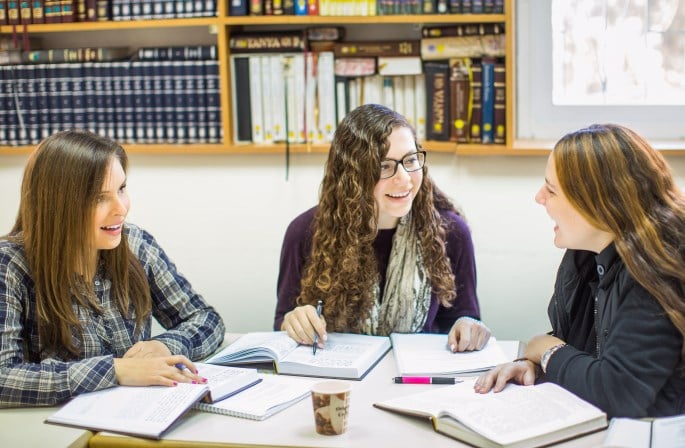
Torah Versus Wisdom
If they tell you there is wisdom among other peoples, believe them.
If they tell you there is Torah among other peoples, do not believe them.44
Torah, it seems, is distinct from what we generally call wisdom. Even the term “divine wisdom” is insufficient.
Our universe, after all, is composed of divine wisdom—yet Torah is more than the universe. Our environment, our bodies, and even the psyche with which we observe all of these, all are of unfathomable design. “How wondrous are Your works, O G‑d,” the Psalmist declares. “You made all of them with wisdom!”45 The opening words of the Torah, “In the beginning G‑d created …”46 are rendered in the Jerusalem Targum as “With wisdom did G‑d create.”
The rabbis of the Talmud even taught us that the Torah is the blueprint of the universe:
The way the world works, when a mortal king builds for himself a palace, he doesn’t build it on his own accord. Rather, he builds according to the advice of an architect. As for the architect, he also does not rely on his mind alone, but he has sketches and worksheets to know how to construct the rooms and how to construct the doorways. So too, the Holy One, blessed be He, looked in the Torah and created the world.47
Yet the laws of Torah are something beyond the laws of nature.
Wisdom tells you all that the Creator created and all that could come from it. Torah tells you what the Creator desires.So what is the difference between wisdom and Torah? The distinction is a simple one—between what is and what should be: Wisdom tells you all that the Creator created and all that could come from it. Torah tells you what the Creator desires from His creation, and how it will be achieved.
For example, wisdom tells you that how you treat others is bound to come back to you. It’s up to you to decide whether you want that coming back or not.
Wisdom tells you that holding on to property that doesn’t belong to you might not be a good idea—not for you nor for the people around you. But it’s up to you to decide whether or not to suffer the consequences for the sake of the immediate benefits.
Torah, on the other hand, doesn’t simply inform; it instructs. The Torah is G‑d, who creates the universe and sustains its existence at every moment, saying, “Whether you understand or not, whether you can justify yourself or not, don’t steal.” That’s taking a step beyond wisdom.48
Indeed, in many instances, the Torah will instruct you to do something that is beyond your understanding. Here again, you listen—not just because you are wise enough to know that the instructions of the One who created heaven and earth are not always going to fit into your understanding, but also because these are instructions, after all, of the Creator of heaven and earth.
This is also what Rabbi Shimon ben Lakish meant when he taught that “the Torah preceded the creation of the world by two thousand years.”49 Obviously, he could not have meant chronological time, since time is also a creation. Rather the meaning is ontological. The Torah provides a higher context that cannot be known from the world itself, a context of meaning and purpose.50

Is Torah Only For Jews?
Although Torah is a covenant between G‑d and the Jewish people, it also contains wisdom and guidance for every person, Jewish or otherwise.
Torah does not come to erase distinctions, but rather to create harmony between individuals and between nations in a time foretold by the prophets. Torah is meant to affect the entire world, to elevate the dignity of all humankind and bring us all into a partnership under a single Creator.
An ancient tradition of the Oral Torah, alluded to in the text of Genesis, tells that G‑d gave seven commandments to all of humanity—six to Adam and one more to Noah. These are sometimes referred to as the Noahide Laws, or the Noahide Covenant.
The Jewish people were instructed at Sinai to influence other peoples to keep these basic tenets of human decency. The Talmud states that any human being who lives by these laws is considered righteous and has a share in the world to come.
Click here to read about the the seven commandments to all of humanity.

Why Learn Torah?
When you immerse yourself in Torah, your goal is not to amass information but to plug your mind into the Creator’s mind. To think in a G‑dly way. To gain a sense of how the Creator of the Universe relates to His creations. It is a sharing of spirit, until the same preferences and desires breathe within the two of you. His thoughts are your thoughts and your thoughts are His. There is no comparable union to be found in any other wisdom.51 As explained earlier, the way you understand Torah is itself the divine wisdom.
But the most important reason for studying Torah is in order to follow its instructions, as Rabbi Yochanan taught, “One who learns and does not fulfill would be better off never having come to this world.”52 On the other hand, Rabbi Acha responds, “One who learns in order to bring his learning into action merits to receive divine revelation.” He learns this from Joshua, who told the people, “Let not this Book of the Torah cease from your lips, but recite it day and night, so that you may observe faithfully all that is written in it. Only then will you prosper in your undertakings and only then will you be successful.”53
And so we ask in our daily prayers, that we should be given a heart “to learn and to teach, to do and to keep.”
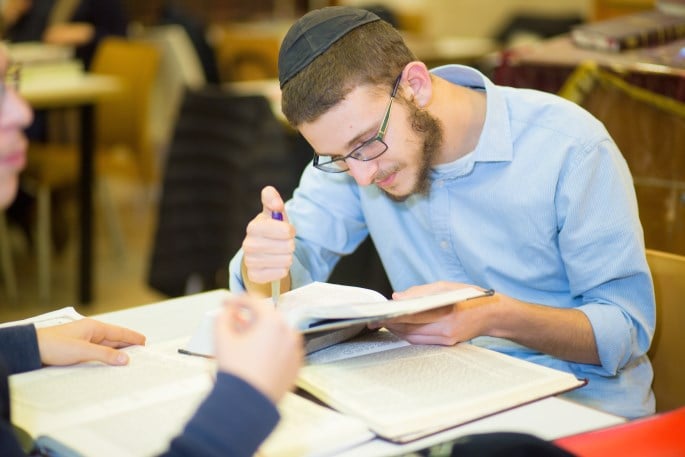
How To Learn Torah
Reading a few Bible stories and staring at the rabbi for the duration of a class don’t cut it. Every discipline has not only its content, but its approach. Alongside the tradition of Torah come the methods by which it is learned. Here are some key points:
Read out loud and retain whatever you learn.
Bruria was a female Torah scholar in Roman times. She was said to have memorized more of the Oral Torah than anyone in her generation. An anecdote of the Talmud provides us a hint of her secret:54
Bruria came across a certain student who was whispering his studies rather than raising his voice. She kicked him and said to him, “Isn’t it written: ‘Ordered in all things and secure?!55 ’ That means that if the Torah is set out in all your 248 limbs—meaning, you exert your entire body in studying it—it will be secure. And if not, it will not be secure.
The Talmud continues that Rabbi Eliezer had a student who would study quietly, and after three years he forgot his studies.
Review, review, and sing while you do.
The sages had strong words for those who learn everything only once. Rabbi Yehoshua ben Korcha taught: “Anyone who studies Torah and does not review it is comparable to a person who sows and does not reap.”56
Torah, taught Rabbi Akiva, is meant to be learned as though it were a song.57 You sing a song over and over.
In fact, all of Tanach has cantillation marks. As for Talmud and other studies, the traditional way of learning all of them is with a singsong voice that expresses the back and forth, rise and fall of statements and arguments, questioning and resolution. The song aids in all facets of learning—retention, cognition and especially enjoyment.
Ask good questions.
“The timid do not learn,” taught Hillel the Elder.58 Why? Because learning begins when you ask a question.
Indeed, the paradigm of Jewish education, the Passover Haggadah, begins by attempting to coax a question out of the children. Without a question, what’s the point in providing an answer? Why attempt to stuff information into a mind that is not seeking?
A standard put-down in the Torah-learning world is to call out your interlocutor as an am ha’aretz. If he’s an am ha’aretz, there’s no point in listening to his words, considering his rulings or even arguing with him. What is an am ha’aretz? A person who has memorized the entire Tanach and Mishnah and understands all he has learned. A person full of knowledge—but no reasoning of his own. A person who can provide all the answers, but asks no questions.59
That’s really all that Talmud study is about—learning to reason for yourself, to derive one thing from another, to see the pros and cons of a new idea, and—most of all—to know how to ask a good question.
Once you find that you are asking the same questions as the great commentators on Tanach and rabbis of the Talmud, then you know you are learning Torah.
Learn with a friend.
This may be the hottest secret of Jewish education: Two heads are better than one—especially when they argue with one another. And so the optimum method of study in the Torah world is with a partner—and preferably one that disagrees with you.
That pair of heads poring over a text together is called a chavruta.
It all began with Moses and Aaron, the original Torah scholars. The Mishnah lists scores of chavrutas, among them the greatest experts and authorities in Jewish law. Their clashes and debates are the meat of most of the Talmud, and it is through the study of those arguments that one becomes a Torah scholar.
That’s the principal advantage of a chavruta: When you study by yourself, you tend to see only one side of the picture. When you study with another, each of you takes a side. Each of you explores, expands and defends his ground on that side. And if you are able to argue while listening and listen while arguing—as any seeker of the truth must be capable of doing—you come out of the debate with a vastly deepened and broadened view of the terrain.
Rabbi Yochanan and Rabbi Shimon ben Lakish were one such great chavruta. When Rabbi Shimon died, Rabbi Yochanan refused to be consoled. The sages sent Rabbi Elazar ben Pedat to take the place of Rabbi Shimon. The Talmud continues:60
Rabbi Elazar ben Pedat went and sat before Rabbi Yoḥanan. With regard to every matter that Rabbi Yoḥanan would say, Rabbi Elazar ben Pedat would say to him: There is a ruling which is taught in a baraita that supports your opinion.
Rabbi Yoḥanan said to him: Are you comparable to ben Lakish? In my discussions with the ben Lakish, when I would state a matter, he would raise twenty-four difficulties against me in an attempt to disprove my claim, and I would answer him with twenty-four answers, and the law by itself would become broadened and clarified. And yet you say to me: “There is a ruling which is taught in a baraita that supports your opinion.” Do I not know that what I say is good?
Learn Torah in a Yeshiva.
If you’re able to take even a few weeks off from work or school, spend them in a yeshiva. If you’re not able to take the time, take it anyway. As Hillel the Elder said, “Don’t say ‘When I have the leisure-time, I will learn.’ Because perhaps you will never have the time.”
A few weeks, a few months, or even a year or so in yeshiva will likely be the best investment you will ever make. You will be immersed in an environment of vibrant debate, rapid-fire questioning of teachers, and a living spirit of timeless Torah.
For more about studying Torah in a yeshiva, and a list of options available, read “Five Reasons to Spend One Semester in Yeshiva.”
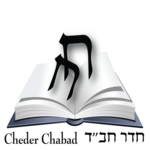




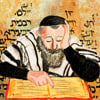



Join the Discussion